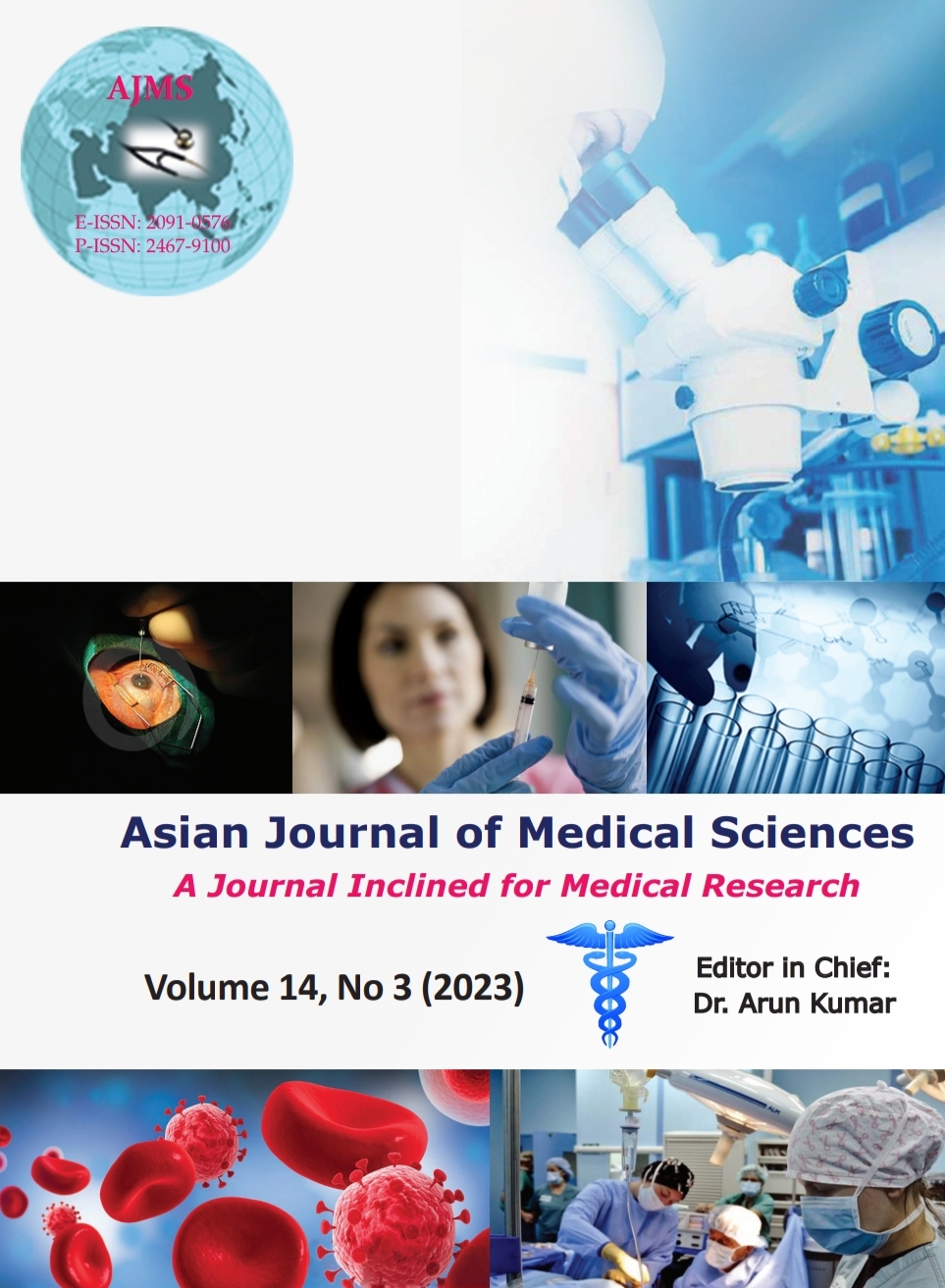The incidence, risk factors, and outcome of new-onset diabetes among post-COVID-19 patients: A single-center study
Keywords:
Coronavirus disease 2019; Hemoglobin; Inflammatory markers; New-onset diabetes mellitus; Obesity; SeverityAbstract
Background: Coronavirus disease 2019 (COVID-19) infection may elevate the risk of hyperglycemia and other complications in patients with and without prior diabetes history. It is not clear whether the virus induces type 1 or type 2 diabetes or instead causes a novel form of diabetes. Precise mechanism of diabetes onset in COVID-19 patients remains unresolved.
Aims and Objectives: The aims of this study were to know the incidence, risk factors, and outcome of new-onset diabetes among post-COVID-19 patients and association of disease severity and occurrence of new-onset diabetes in post-COVID-19 Patients.
Materials and Methods: Patients age more than 18 years, not known diabetic, tested positive with rapid antigen test or reverse transcription polymerase chain reaction admitted to a tertiary care hospital were included in the present prospective observational study. The patients who developed new-onset diabetes during the 3 months follow-up and, the risk factors associated with new-onset diabetes are assessed. Patients with hemoglobin (HbA1c) >6.5% were diagnosed with new-onset diabetes.
Results: Total 246 patients were non-diabetics at admission, at 1 week 188 were non-diabetics and 49 were diabetics, and nine were prediabetics. Patients were within the age range of 21–95 years with mean age of 49.46±17.02 years and male predominance (59.76%). Out of 188 non-diabetics, 19 (10.10%) developed new-onset diabetes, and 2 (1.06%) developed new-onset prediabetes after 3 months. Out of 49 diabetics, 19 (38.77%) became non-diabetic, 30 (61.22%) remained diabetic, and out of nine prediabetes 2 (22.22%) developed new-onset diabetes, 5 (55.55%) reversed to non-diabetic, and 2 (22.22%) remained prediabetic after 3 months. In total, from HbA1c at admission and 3 months, 51 subjects had new-onset diabetes (20.73%). Most common risk factors found with occurrence of new-onset diabetes were those on high dose of steroid (P=0.0001), family history of diabetes mellitus (DM) (P=0.001), over weight and obesity (P=0.0001), fungal infection (P=0.0001), and need of oxygen and intensive care unit requirement (P=0.0001). The patient with increased laboratory markers of inflammation such as ferritin, neutrophil leukocyte ratio, lactate dehydrogenase, and C-reactive protein D-dimer had strong association with occurrence of new-onset diabetes (P=0.0001).
Conclusion: COVID-19 infection confers an increased risk for type 2 diabetes. Patients of all ages and genders had an elevated incidence and risk for occurrence of new-onset diabetes. Moreover, it was strongly associated with overweight and obesity, steroid dosage, and its duration, disease severity, positive family history of DM, and increased laboratory markers of inflammation. Hence, particular attention should be paid during the first 3 months after COVID-19 infection and patients need to be under follow-up for blood glucose monitoring.
Downloads
Downloads
Published
How to Cite
Issue
Section
License
Copyright (c) 2023 Asian Journal of Medical Sciences

This work is licensed under a Creative Commons Attribution-NonCommercial 4.0 International License.
Authors who publish with this journal agree to the following terms:
- The journal holds copyright and publishes the work under a Creative Commons CC-BY-NC license that permits use, distribution and reprduction in any medium, provided the original work is properly cited and is not used for commercial purposes. The journal should be recognised as the original publisher of this work.
- Authors are able to enter into separate, additional contractual arrangements for the non-exclusive distribution of the journal's published version of the work (e.g., post it to an institutional repository or publish it in a book), with an acknowledgement of its initial publication in this journal.
- Authors are permitted and encouraged to post their work online (e.g., in institutional repositories or on their website) prior to and during the submission process, as it can lead to productive exchanges, as well as earlier and greater citation of published work (See The Effect of Open Access).




